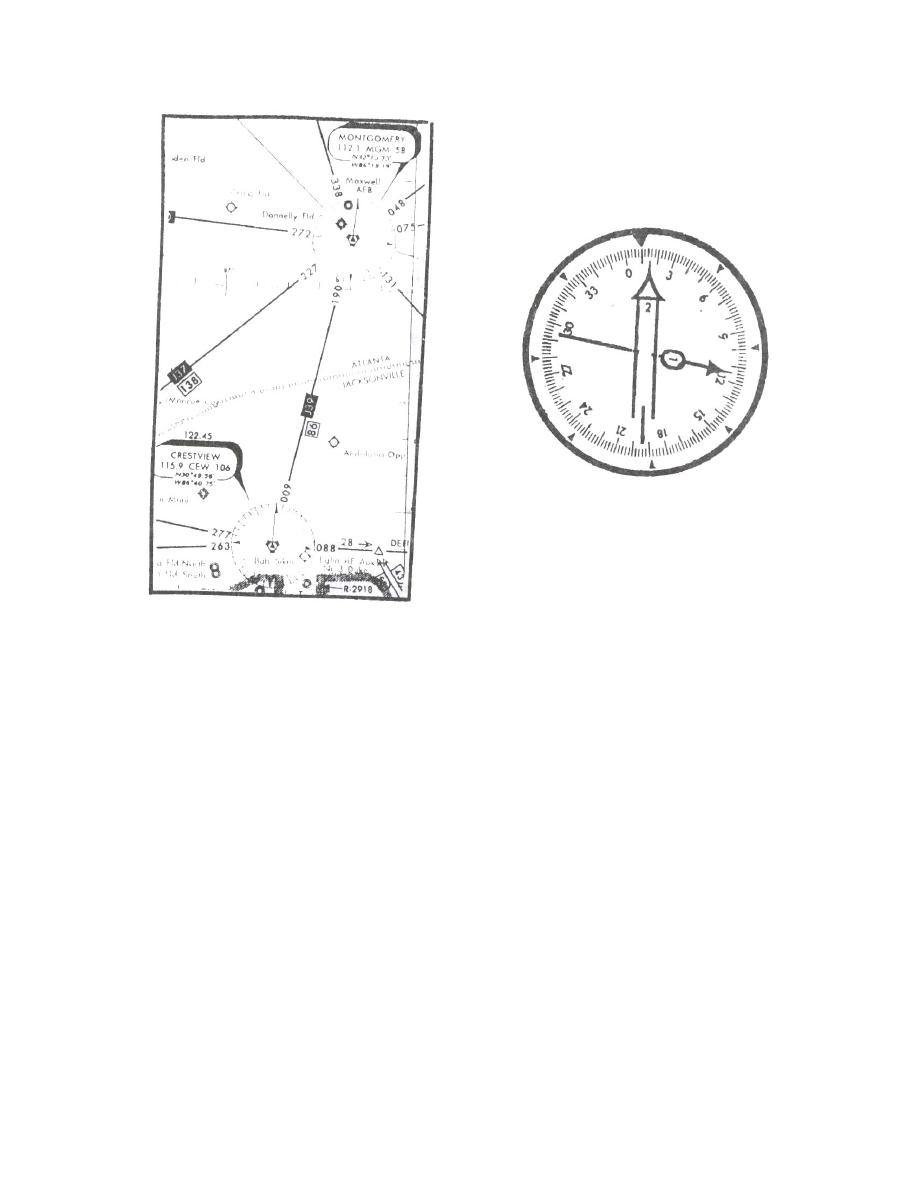 |
|||
|
|
|||
|
|
|||
| ||||||||||
|
|  INSTRUMENT NAVIGATION
Figure 31
In Figure 31, you are trying to fly J-39, but you are on the 195R of MGM. At 30 DME you
are left of course by 2 nm. Therefore, when you turn that aircraft to 020 to correct your
navigational error, you should realize that to get back on course you will have to cross 2 1/2 nm
of airspace. If the aircraft were on the same radial at 10 DME however, you would only have to
cross a little less than 1 nm of airspace. In this case, you are moving your aircraft the same
number of radials as in the first case. But, because the radials are more closely spaced nearer the
station, you would be back on course sooner since you will only be crossing 1 nm instead of 2
nm. Thus, the head of the #2 needle, would move toward 010 more quickly.
This correlation of distance from the station with the distance between radials must b e kept
in mind whenever making course corrections, otherwise the behavior of the #2 needle may
not be in accordance with your expectations.
The practical application of the above discussion deals with choosing the proper time to take
out the course correction and turn back to the original course. Based on the above examples, a
good rule of thumb is that when close to a station, you will be crossing radials rapidly; therefore,
you must take your correction out in time to avoid overshooting your course. When further
away, the radials are spaced further apart, so you can wait longer.
3-22 RADIAL TRACKING AND COURSE CONTROL
|
|
Privacy Statement - Press Release - Copyright Information. - Contact Us |